Table of Contents
Introduction
Traditional farming has been the pillar of human existence for millennia. Well before the advent of contemporary technology and chemical approaches, societies all over the world used natural processes to cultivate crops, raise livestock, and support their means of livelihood.
Traditionally, farming embodies an intimate relationship between human beings and the earth. It prioritizes harmony with nature, the wise use of resources, and respect for ecological balance.
Traditional agriculture differs from industrial farming, which tends to concentrate on short-term production, in that it prioritizes long-term sustainability and the welfare of the community.
Perhaps the most remarkable feature of traditional methods is their flexibility. Farmers learned methods tailored to their landscape, type of soil, and climate. For instance, hilly region terrace farming, rotation in plains, and forest region shifting cultivation are all based on this system.
All of these methods were made to not only optimize productivity but to also maintain the fertility of the soil for generations to come. This makes traditional agriculture far more than a collection of antique techniques—it is a knowledge system that has been handed down through generations.
The importance of ancient agriculture is being rediscovered in the modern world. In the face of growing soil degradation, loss of genetic diversity, and the dangerous implications of chemical agriculture, farmers and agricultural scientists are looking back to ancient wisdom.
These ancient methods of farming are not only environmentally friendly but also economical. Farmers, particularly in rural parts of the country, still depend on these methods because they involve very little external inputs and cut down on dependence on costly fertilizers and pesticides.
Another important aspect of traditional farming is its cultural importance. Farming was more than the provision of food; it was linked to festivals, ritualistic practices, and local customs. Seed choice, watering, and harvest times were frequently in accordance with the lunar cycle, making farming a religious and not merely utilitarian process.
This multi-dimensional approach provided food security alongside building social relationships between communities.
Today, as we discuss the 9 strong advantages of old-fashioned farming practices, we should note their likely contribution to a sustainable future. Traditional farming presents the solutions to current problems like climate change, availability of resources, and increasing input prices.
Additionally, the long-standing knowledge inherent in such practices can motivate new ways of thinking that marry ancient wisdom with contemporary science.
In this blog, we will go in-depth into the major advantages of traditional farming, the strategies that make it successful, the issues faced by farmers in continuing these practices, and potential solutions to preserve the tradition.
Along the way, you will also receive practical tips, real-life experience, and solutions to common questions about traditional agriculture.
At the end, you will realize that conventional agriculture is not old-fashioned—it is a time-tested, sustainable, and formidable system that can still feed people and the earth.
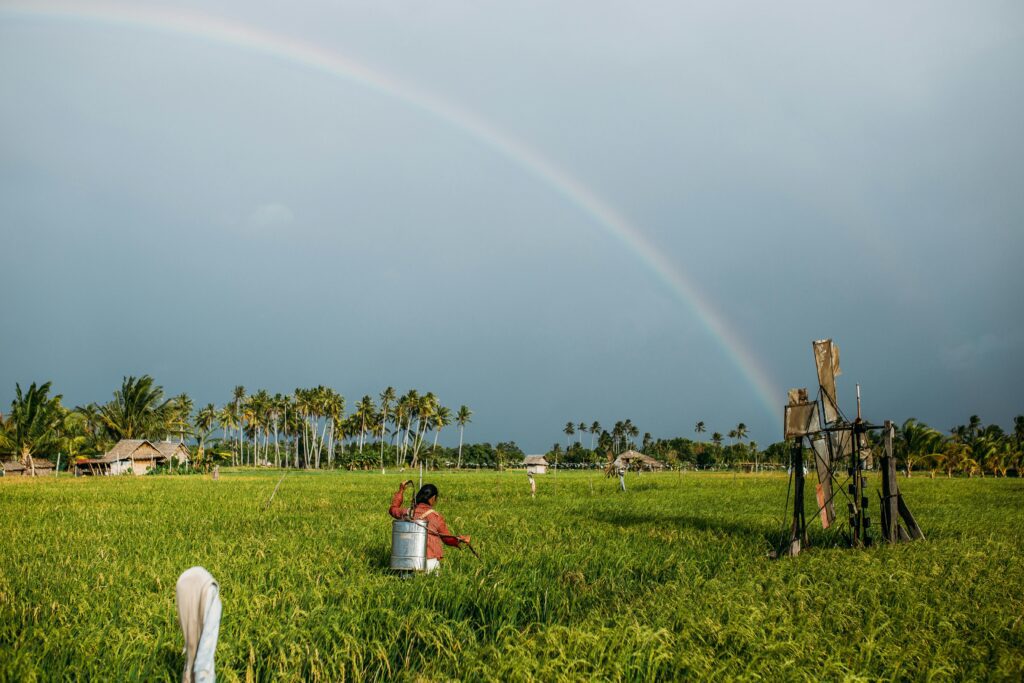
9 Strong Advantages of Conventional Farming Techniques
Traditional agriculture is more than a system of food production—it is a lasting lifestyle that links people, culture, and land. With age-old methods, farmers not only guarantee good yields but also long-term ecological balance.
Here are nine compelling advantages that make traditional agricultural practices useful even in the present day.
1. Maintains Soil Fertility Naturally
The best advantage of traditional agriculture is its emphasis on soil. Farmers shun chemical fertilizers and resort to compost, animal manure, and crop residues to fertilize the soil. This keeps the land fertile in the long run without compromising its natural texture and nutrients.
Traditional agriculture, unlike contemporary chemical-heavy approaches that tend to leach the soil, ensures the land remains fertile for generations to come. For instance, mixed cropping and crop rotation help supplement vital minerals in the soil while avoiding nutrient depletion.
Healthy soil automatically means healthier crop yields and quality food.
2. Encourages Biodiversity in Agriculture
Conventional farming promotes biodiversity since it provides space for several crops, trees, and even animals to live in the same agricultural system. Farmers usually plant cereals, pulses, vegetables, and fruits together, hence diminishing the chances of crop failure.
This variation not just improves soil health but also provides habitats for bees, birds, and insects that are essential for pollination. Monoculture farming systems, on the other hand, destroy biodiversity and expose crops to pests.
By sustaining a well-balanced ecosystem, traditional agriculture provides natural pest control, healthier plants, and increased resilience to climate fluctuations.
3. Reduces Dependency on Chemicals
One of the greatest benefits of conventional farming is its low application of artificial fertilizers, pesticides, and herbicides. Farmers, instead, utilize organic pest repellents such as neem extracts or cow urine and employ crop production techniques like intercropping to suppress weeds and insects.
This minimizes chemical contamination of food, water, and soil and renders farming less hazardous for human consumption and the environment. Not only does this save money for farmers, but it also improves the nutritional value of food.
Many health experts today emphasize the importance of food grown under traditional farming methods due to its higher purity and safety.
4. Ensures Low-Cost Farming Practices
Traditional agriculture is highly cost-effective. Because it uses locally sourced seeds, natural manure, and rain water or other natural means of irrigation, farmers do not need to invest a lot in machinery or external inputs.
This is especially advantageous for small farmers in rural communities who cannot purchase costly modern technology or hybrid seeds. By lessening external dependence, traditional farming enables farmers to stay financially solvent while providing adequate food for their own families and communities.
Moreover, most of these practices are labor-intensive, generating rural livelihoods and enhancing village economies.
5. Enhances Climate Resilience
One of the untold advantages of old-fashioned farming practices is the capability to weather climate adversity. Techniques such as mixed cropping, agroforestry, and water harvesting enable farmers to get used to irregular rainfall, drought, and temperature fluctuations.
In contrast to contemporary systems that have a large dependence on irrigation and external power, traditional farming effectively utilizes natural resources. An example is rainwater harvesting and local irrigation ditches that help crops endure dry seasons.
This sustainability is necessary today as climate change increasingly endangers global food security.
6. Promotes Healthy and Nutritious Food Production
The food produced using traditional farming methods tends to be healthier than chemically produced food. Since artificial growth promoters are not employed, plants develop naturally by absorbing vital minerals and nutrients through the soil.
Traditional practices focus on heirloom and native seeds, which have superior nutritional qualities than hybrid ones. For instance, traditionally cultivated millets, pulses, and vegetables offer balanced nutrition, enhancing stronger immunity and overall health.
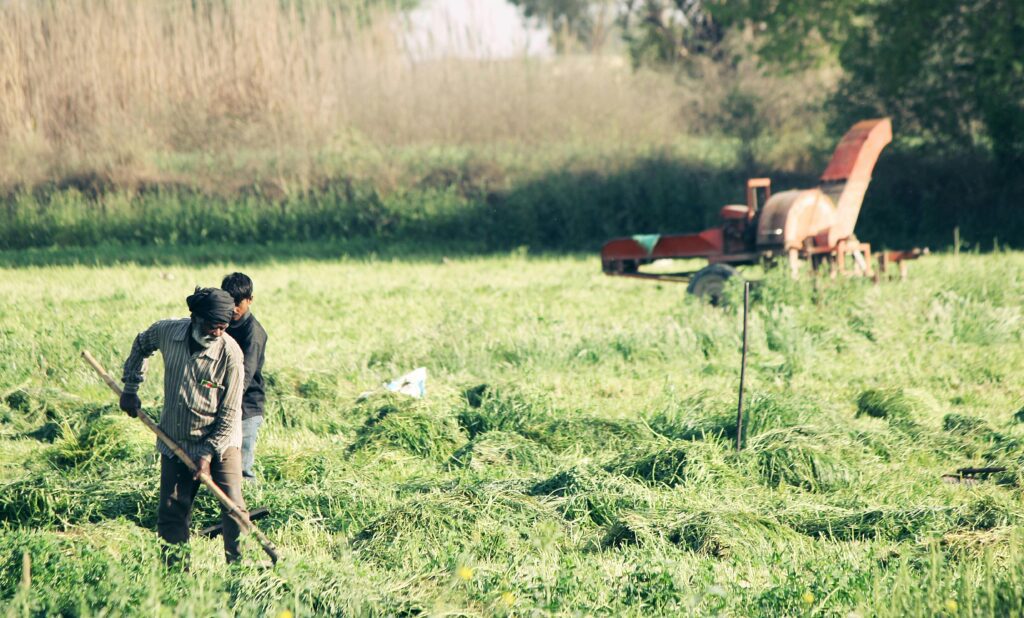
Customers in search of organic and chemical-free food increasingly appreciate traditional farming for its positive effects on health.
7. Safeguards Indigenous Knowledge and Culture
Traditional agriculture is not only a method but a cultural activity that has been passed from generations. It involves centuries of knowledge about seed conservancy, seasonal rhythm, and management of natural resources.
Through their maintenance, societies maintain their cultural identity as well as foster strong intergenerational relationships. For example, most festivals in India and elsewhere are centered on agricultural cycles, reminding individuals of their strong identification with the land.
In this sense, traditional agriculture is a living heritage that sustains both food production and cultural pride.
8. Encourages Sustainable Resource Use
A key principle of traditional farming is resource conservation. Farmers use natural water sources carefully, recycle crop residues, and adopt techniques like mulching to preserve soil moisture. These sustainable practices reduce wastage and promote long-term resource availability.
Traditional irrigation systems like step wells, ponds, and canals are still operational in most areas and supply water in environmentally friendly manners. Traditional agriculture ensures equitable use of resources that subsequent generations can share as well.
9. Consolidates Rural Livelihoods and Communities
Traditional agriculture is ingrained in rural communities where farming is not only an activity but a lifestyle. Through dependence on traditional means of farming, communities bond with one another through mutual labor, seed swapping, and shared practices.
This fosters social ties and enriches rural livelihoods. Also, since traditional farming involves more manual labor than in mechanized systems, employment for the surrounding population is provided.
In most regions across the globe, this has assisted in lessening movement from rural communities to urban areas, maintaining rural stability and culture.
Methods of Traditional Farming Practices
Though contemporary farming tends to incorporate machinery, chemical fertilizers, and high-tech irrigation, traditional farming thrives on simplicity, local experience, and natural methods. Such methods are meant to cooperate with the environment and not against it.
Some of the most critical techniques that still characterize traditional farming are outlined below.
1. Crop Rotation
Crop rotation is among the most significant techniques in traditional farming. Producers cultivate various varieties of crops on a similar tract of land in consecutive years. For instance, a grain crop like rice or wheat may be succeeded by legumes like lentils or chickpeas.
The system automatically replaces soil nutrients, especially nitrogen, and avoids soil depletion. Crop rotation also checks the accumulation of pests and diseases, which can grow unabated when the same crop is produced year after year.
By maintaining the cycle of nutrients in the soil, this practice provides enduring fertility and sustainable production without relying on inorganic fertilizers.
2. Mixed Cropping
Yet another common method in ancient agriculture is mixed cropping, in which two or more crops are cultivated simultaneously in a single field. Maize with beans or pulses is a typical example.
The crops complement one another—while maize acts as a support for climbing plants, beans add nitrogen to the soil. This method lessens the chances of complete failure of crops because if one crop is destroyed by pests or bad weather, the other can still survive.
Mixed cropping also offers a variety of harvest for families, guaranteeing food and income security.
3. Use of Organic Manure and Compost
Instead of synthetic fertilizers, traditional farming methods emphasize organic manure, farmyard compost, and green manures. These natural inputs improve soil fertility while enhancing its water-holding capacity and structure.
Farmers often recycle livestock waste, crop residues, and household organic matter into nutrient-rich compost. This not only reduces farming costs but also promotes eco-friendly agriculture.
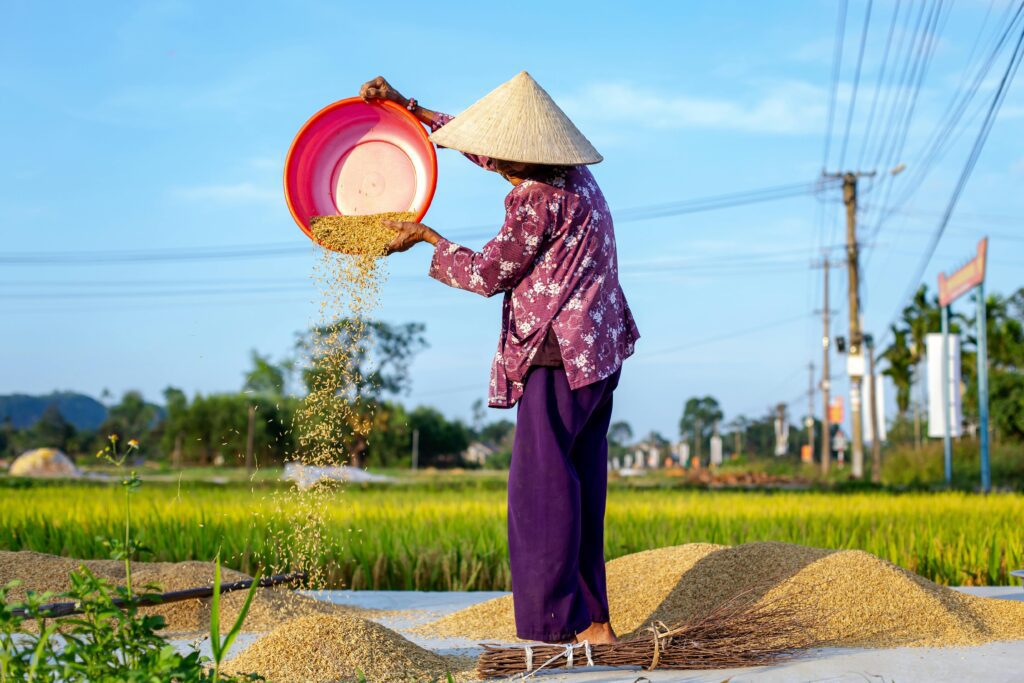
Unlike chemical fertilizers that hurt soil health in the long term, organic manure feeds the soil naturally, enabling healthier and more nutritious crops.
4. Traditional Irrigation Systems
Without the usage of modern irrigation technologies, traditional farming depended on innovative water management systems. Farmers dug ponds, step wells, canals, and small tanks to harvest rainwater. In hilly regions, bamboo pipes and gravity-run channels supplied water to fields.
These systems were very efficient, inexpensive, and community-controlled. They provided that the water was distributed equitably among farmers, inducing cooperation and preservation of resources. Even now, most rural areas still rely on these ancient irrigation practices as they are cost-effective and sustainable.
5. Indigenous Seed Use
Seed conservation is a key aspect of conventional agriculture. Farmers store seeds from past harvests, so local, indigenous varieties are saved and reused every year. These seeds tend to be more tolerant to local pests, diseases, and climatic conditions than hybrid varieties.
Additionally, indigenous seeds maintain biodiversity and are nutritionally superior. For example, traditional rice varieties or millets not only suit regional climates, but also have more nutritional content compared to recent hybrid seeds.
This practice is an exemplification of the sagacity of traditional farming in maintaining food security as well as cultural identity.
6. Shifting Cultivation
Traditional farming in certain areas, such as forest or tribal regions, includes shifting cultivation. Farmers convert a small area of land to culturable land, farm it for a few seasons, and leave it fallow while they shift to another location.
This method assists in the natural replenishment of soil fertility and in avoiding the overuse of a single piece of land. Although less prevalent today because of population pressure, shifting cultivation is still a valuable historical and cultural agricultural practice in many societies.
7. Agroforestry
Agroforestry is a farming practice where both trees and crops are grown simultaneously. This method, practiced in traditional farming, maintains a natural equilibrium through enhanced soil fertility, water conservation, and crop shade.
The trees also shield the land from wind erosion and add other resources in the form of fruits, wood, or animal fodder. Agroforestry adds diversity while minimizing wastage of land, hence ranking among the most environmentally friendly traditional farm practices.
Challenges of Traditional Farming
Though traditional farming has numerous ecological and cultural advantages, it is not challenge-free. In today’s rapidly changing world, farmers practicing only traditional methods lack the advantage of competition with modern industrial farming.
Let’s discuss some of the key challenges of traditional farming techniques in the context of contemporary agriculture.
1. Lower Productivity Compared to Modern Farming
The largest challenge of traditional agriculture is that it tends to yield lower produce as compared to industrialized and chemical-intensive agriculture.
Because farmers make use of organic manure, native seeds, and human labor, per hectare productivity can be lower than hybrid seed using, chemical fertilizer utilizing, and machine-using modern farms. Lower production sometimes hinders traditional agriculture in providing enough food for increasing populations.
2. Relying on Natural Conditions
Conventional agricultural practices rely greatly on natural circumstances like rainfall, soil quality, and periods of the seasons. Without contemporary irrigation or controlled farming systems, unforeseen weather conditions—such as droughts, floods, or late monsoons—can result in substantial losses of crops.
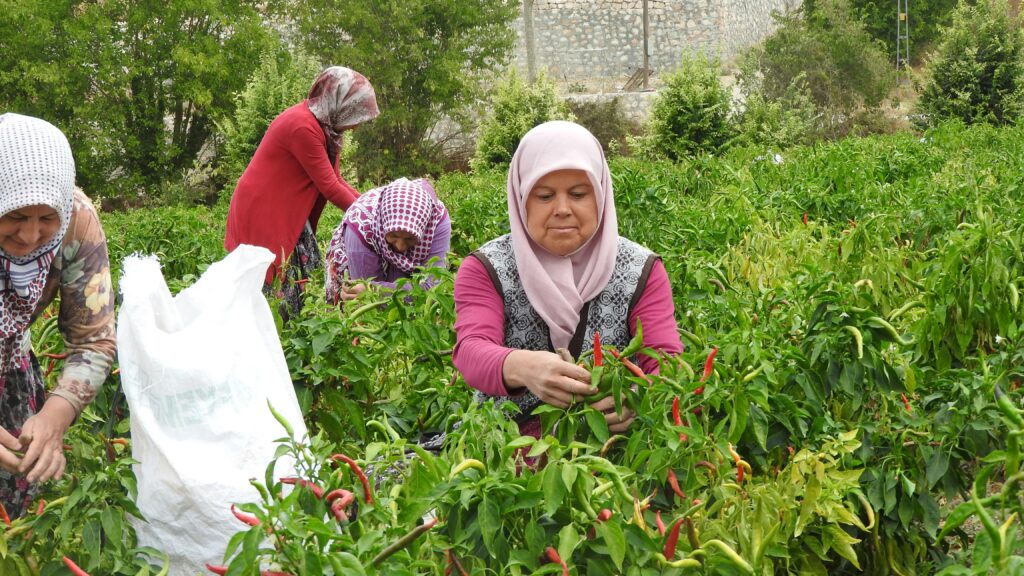
Climate change has increased this issue, making agriculture more volatile and risky for people who only use conventional agriculture.
3. Limited Access to Modern Technology
Traditional farmers usually do not have access to new technology, scientific studies, and recent farming equipment. This is true because this preserves the cost factor but restricts efficiency and output at the same time.
For instance, traditional irrigation systems might not be enough in periods of drought, and manual labor tends to be labor-intensive compared to machinery options. Traditional farmers are at risk of getting left behind regarding competitiveness and revenues if they are not supported.
4. Market Challenges and Low Profit Margins
Even if crops are grown successfully, conventional farming practices lack the ability to access lucrative markets. Most farmers find it hard to get better prices for their produce because of limited infrastructure, transport, and market information.
Furthermore, food produced using traditional agriculture is underpriced relative to high-yielding commercial produce, although more sustainable and nutritious. This makes the farmers wary of pursuing traditional methods.
5. Pressure due to Modernization and Urbanization
As a result of modern farming and urban growth, traditional agriculture is continually being threatened. Young people tend to move to urban areas for better prospects, abandoning land and traditional farming practices.
This disinterest among the youth has resulted in a vacuum in the passing down of traditional farming practices, contributing to the loss of indigenous knowledge and practices that previously sustained communities.
6. Land Fragmentation and Scarcity of Resources
In most areas, agricultural land is being fragmented as a result of population growth and inheritance patterns. Small holdings pose a big challenge to carrying out traditional agriculture in an efficient manner, particularly methods such as agroforestry and crop rotation that demand broad sizes of land.
The limited natural resources of water and fertile land also contribute to the difficulty. Such pressure on resources makes most farmers drop traditional farming for intensive modern farming.
Solutions to Overcome Challenges in Traditional Farming
Although traditional farming practices experience many challenges in today’s world, they can still be made more robust and adopted to suit the current agricultural needs.
Traditional agriculture can still be a profitable and sustainable practice with the implementation of the right strategies, policies, and farmer engagement. Let’s take a look at some of the doable solutions.
1. Combining Traditional and Modern Practices
One effective remedy is the incorporation of traditional knowledge into contemporary farm innovations. For example, whereas farmers can stick to organic manure and local seeds, they can integrate modern soil analysis, drip irrigation, and enhanced tools.
This integration increases productivity without sacrificing the environmental harmony of traditional farming. Such a method guarantees increased production while safeguarding soil fertility and biodiversity.
2. Encouraging Climate-Smart Farming
To counter the excessive reliance on natural conditions, agriculture can embrace climate-resilient methods. For instance, rainwater harvesting, micro-irrigation, and mulching can moderate the effects of drought and unpredictable rainfalls.
Cultivating climate-resilient native crops like millets and pulses also guarantees food security during unfavorable weather. These reforms make conventional agricultural practices more climate-change-resistant while also protecting rural livelihoods.
3. Training and Knowledge Sharing for Farmers
Most farmers working in traditional farming lack exposure to recent information. Extension services, training, and farmer field schools can all offer education on how local knowledge can be merged with science.
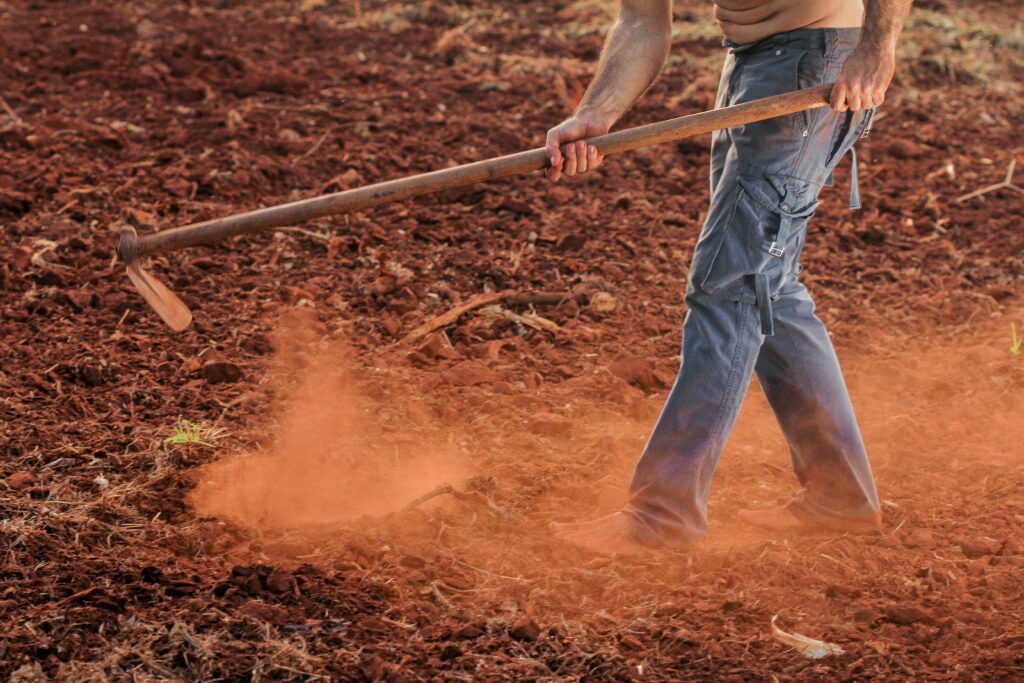
Transfer of successful case histories of traditional agriculture across regions can motivate farmers to continue these methods. Governments, NGOs, and universities must play a significant role in closing this knowledge gap.
4. Building Strong Market Linkages
To be profitable, traditional farm practices should have access to equitable markets. Governments and cooperatives can create organic markets, farmer-producer organizations (FPOs), and direct farm-to-consumer outlets.
Labeling and certification of food produced using traditional agriculture can enhance consumer confidence and command premium prices. This not only increases the earnings of farmers but also encourages them to maintain sustainable practices.
5. Empowering Youths to Engage in Agriculture
For maintaining continuity, there is a need to integrate younger generations into traditional farming. This may be done by providing incentives like subsidy, training, and entrepreneurship in organic and environmentally friendly farming.
Agricultural awareness programs can be introduced by schools and colleges to motivate young minds towards considering farming a lucrative profession. By making farming innovative and lucrative, more youth will revert to their origins and preserve traditional agriculture.
6. Land Management and Community Farming Models
Land fragmentation is a major issue for small farmers. A possible solution is through cooperative or community farming systems, where the smallholders combine their land and resources for communal cultivation.
This enables the proper practice of crop rotation, agroforestry, and other conventional farm practices on a large scale. Further, encouraging soil conservation practices, afforestation, and water-saving methods will help overcome the shortage of resources, enabling farming to be more sustainable in the long term.
FAQs on Traditional Farming
1. What is traditional farming and why is it important?
Traditional farming is a centuries-old method of agriculture that utilizes natural resources, native seeds, organic manure, and environmentally sound practices. It matters as it maintains soil fertility, safeguards biodiversity, and ensures sustainability.
In contrast to chemical farming, traditional farming guarantees long-term production without destroying the environment. It also has cultural relevance as most communities share traditional agriculture through generations, ensuring ancestral knowledge is preserved.
2. How are traditional farming methods different from modern farming techniques?
The principal distinction rests in inputs and approach. Conventional farming practices rely on natural sources like compost, crop rotation, and native seeds, while modern farming is based on machines, hybrid seeds, and chemical fertilizers.
Although modern farming yields more, it tends to drain the soil and damage the ecosystem. Conventional agriculture stresses sustainability, resilience, and harmony with nature, which are superior long-term strategies for food security compared to modern farming.
3. Can traditional farming feed the growing global population?
Yes, but with adjustments. Traditional farming alone can be subject to productivity limitations. Yet, when integrated with selective modern approaches such as soil testing, enhanced irrigation, and organic certification, it can be a major contributor to food supply worldwide.
The secret is to scale up sustainable traditional farming techniques while advocating eco-friendly practices. Traditional agriculture, according to many experts, can be a key player in ending global hunger if supported by technology and equitable markets.
4. What are the financial advantages of traditional farming?
Traditional farming is economically efficient because it minimizes use of costly fertilizers, pesticides, and hybrid seeds. Farmers tend to make use of organic manure, produce their own seeds, and use local irrigation systems, thereby minimizing production costs.
Furthermore, the increasing trend for organic and chemical-free food enables farmers adopting traditional farming to receive higher prices in markets. This not only enhances their earnings but also makes rural economies more robust.
In the long term, conventional agriculture aids economic stability as well as environmental conservation.
5. What are some traditional farming practices being followed today?
Some traditional farming practices are still commonly followed around the globe. Some of them include crop rotation, mixed cropping, agroforestry, utilization of organic manure, and seed conservation using indigenous seeds.
In hilly areas of India, terrace farming and rainwater harvesting in desert areas are prime examples of traditional farming. In Latin America and Africa, shifting cultivation and intercropping are usual.
These methods still work, are environmentally friendly, and hold cultural importance and remain relevant to prove that traditional farming is still applicable in today’s era.
Conclusion
Conventional farming is much more than a primitive method of cultivating the land—it is an entire way of life, a way of culture, and a way of sustainability.
Grounded in centuries of experience, conventional methods of farming have never sought to degrade the soil, waste water, preserve monoculture, or produce unhealthy food.
From mixed cropping and crop rotation to native seed usage and nature irrigation, these techniques are environmentally friendly, budget-friendly, and extremely tied to the cycles of nature.
Although there are pressures of decreased yields, market constraints, and pressures of modernization, the capability of traditional farming cannot be overemphasized.
Indeed, with increasing debates on climate change, soil erosion, and high costs of chemical farming, the world has once again returned to traditional farming as a sure alternative.
When combined with contemporary innovations—like better irrigation systems, soil analysis, and organic labels—traditional farming can match modern practices while holding onto its sustainability.
The 9 robust advantages we discussed—running from maintaining soil fertility and conserving biodiversity to supporting community health—demonstrate how conventional farming is not a relic of the past. Rather, it’s an enduring model that contains solutions to a lot of current farming and environmental issues.
Being supportive of farmers embracing traditional farming practices, building strong market connections, and engaging youth in the sector will guarantee this heritage endures.
As consumers, as researchers, and as policymakers, we all have a stake in saving and promoting traditional agriculture. Buying traditional or organic food, patronizing local farmers, and raising awareness for sustainable farming are small actions that can lead to very big changes.
Ultimately, traditional farming is not about the past—it is about creating a healthier, greener, and more secure future for the generations to come.
